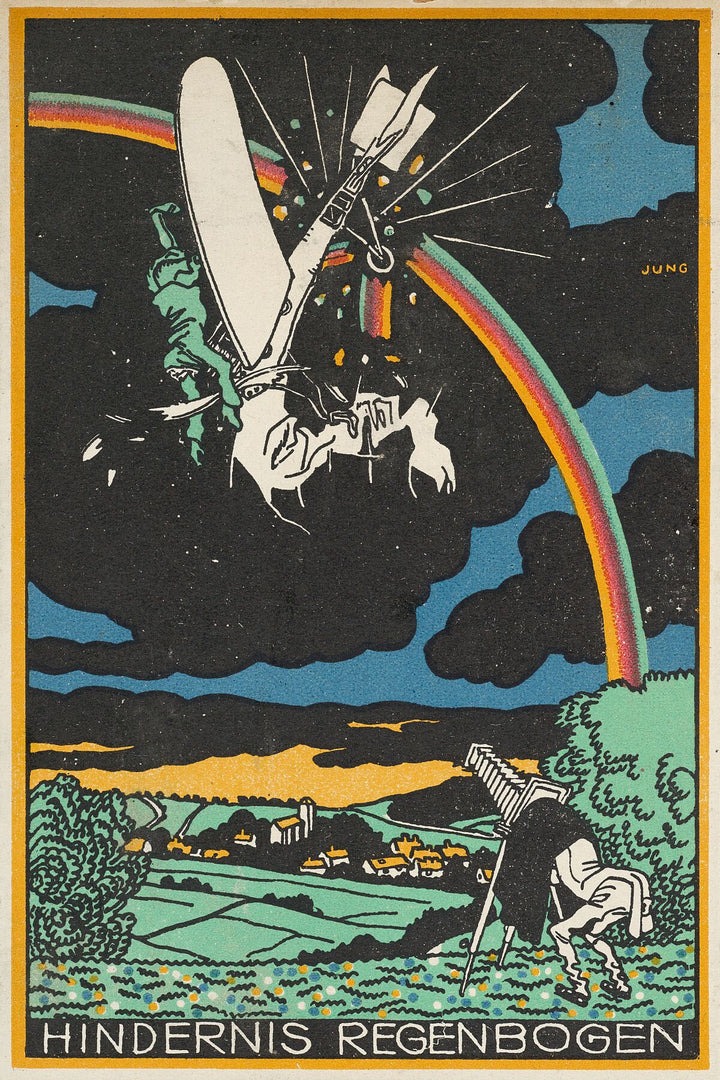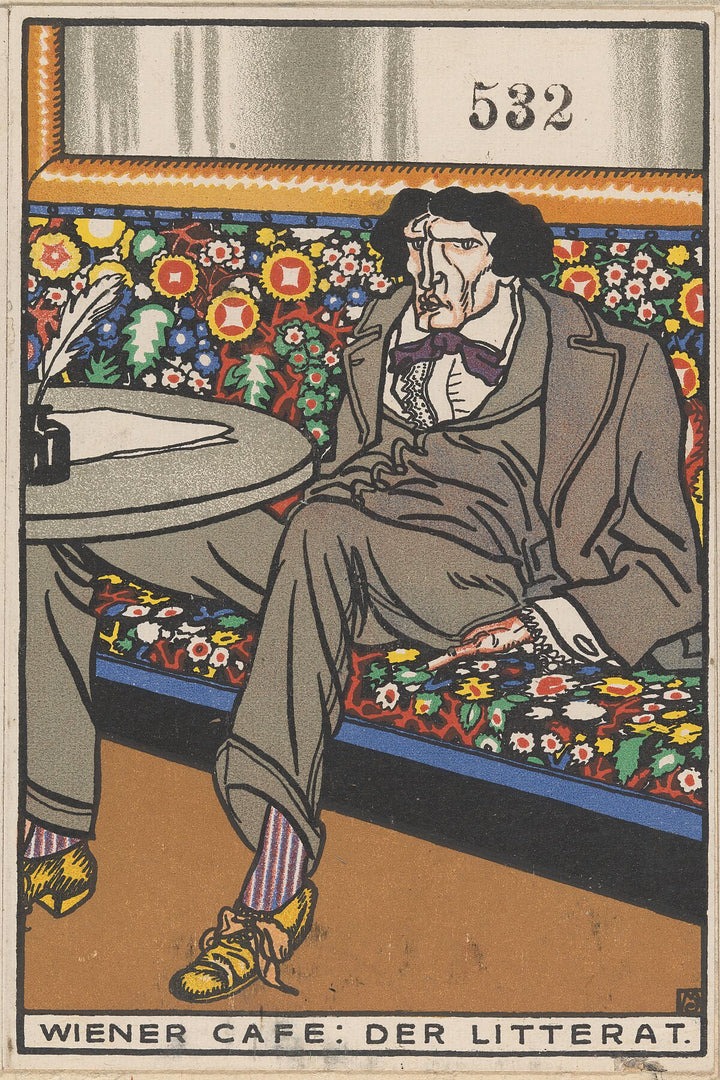The Vienna cafe was a bourgeoise institution when Moriz Jung (1885-1915) was making art. It was where the middle class, lawyers, students and the bohemian city’s intelligentsia spent most of their leisure time – and while they talked and read, they could listen to orchestras play Italian or German operas and Viennese songs.
Café l’Europe, Café Fenstergucker, Café Apfel, Café Dobner on the Linke Wienzeile, the smaller cafes around the Schwarzspanierhaus, the Artisten Café near the Praterstern, and the hot spots in the Wipplingerstrasse were the places to be. And Jung drew the types he saw.
Jung and other artists of the Wiener Werkstätte (the Viennese Workshops founded in 1903 by architect Josef Hoffmann and artist Koloman Moser), the first organisation in Austria dedicated to the production of modern decorative arts, promoted their style through numbered postcards of life in the bohemian city.
One of the best known is Jung’s Wiener Cafe: Der Litterat (Viennese Cafe: The Man of Letters). The image shows one of the cafe’s intellectuals in thoughtful and rumpled repose.
Together with the Vienna Secession, out of which it was formed, the Wiener Werkstätte focused on high quality visualisations of the group’s commitment to Gesamtkunstwerk (“total artwork”), which aimed for a unified aesthetic across the whole designed environment, from coffee cups, textiles and fashion to palace interiors.
Jewish artist Moriz Jung left the Czech south Moravian Region for Vienna in 1901, and studied at the School of Applied Arts with the likes of Alfred Roller, Carl Otto Czeschka, Josef Hoffmann, Koloman Moser and Bertold Löffler.
His work was featured in The Surface magazine, Ver Sacrum, Erdgeist, Der Ruf, the Fremdenblatt and Dieglühlichter in “a wide variety of aliases”. He received a commission to design the prestigious second program for the newly opened Cabaret Fledermaus in Vienna.
In all Jung designed 63 postcards for the Wiener Werkstätte.

Rainbow Obstacle (Hindernis Regenbogen) by Moriz Jung – 1911
Called up to fight in World War 1, in September 1914 he was seriously wounded in Galicia. He was soon sent back to the front. He was killed in the Carpathian Battle on March 11, 1915.
Not long before his death, Jung gave the critic Arthur Roessler a note: “All doubts about a calling and the like have disappeared, gone in the Thunder of artillery, and if I fall in the field, I know that I have lived not only for myself, but also for my people.”
His art lives on.

Dancers (Apachentänze!) by Moriz Jung – 1911. Buy this print

At the Heuriger (Beim Heurigen) by Moriz Jung – 1911. Buy this print
Buy Moriz Jung prints in the shop.
Would you like to support Flashbak?
Please consider making a donation to our site. We don't want to rely on ads to bring you the best of visual culture. You can also support us by signing up to our Mailing List. And you can also follow us on Facebook, Instagram and Twitter. For great art and culture delivered to your door, visit our shop.















